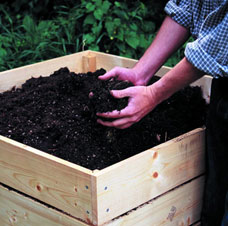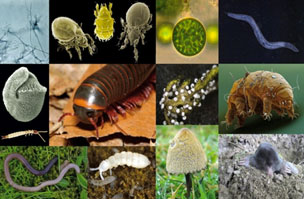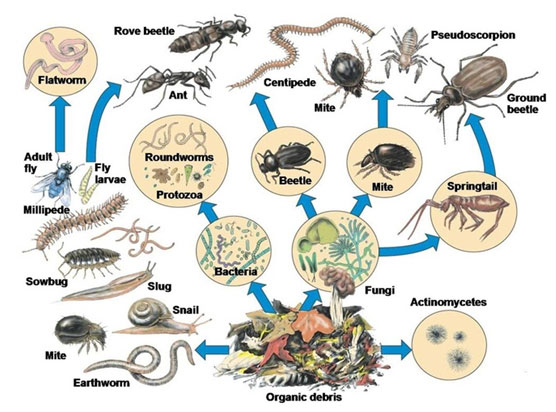
Source: Compost Bin, Sunset.com

Source: Compost Bin, Sunset.com
Compost bins are an excellent example of the cycling of matter within living systems. Composting is nature's process of recycling decomposed organic materials into a rich soil known as compost. When people set up compost bins, they are basically speeding up the simple process nature uses.
Soil often does not have adequate amounts of nitrogen, phosphorus, and potassium that plants require. Many gardeners do not wish to add synthetic fertilizers to the soil. They prefer a more natural way of adding nutrients into the soil. This can be accomplished by composting.

Source: Soil Diversity, European Commission
All organic materials have the ability to decompose or breakdown into simpler compounds or elements. This decomposition is done mainly by beneficial microbes, such as bacteria and fungi. Nitrogen, potassium, and phosphorus are produced naturally by the feeding of microorganisms. The nutrients are then available for plants to use.
Microbes rely on carbon and nitrogen as nutrients. These materials are used to build cell parts, reproduce, build proteins, and provide energy.
In order for compost bins to function efficiently, there needs to be a mix of sources of nitrogen and carbon. Normal life activities of microbes in a compost pile require one nitrogen molecule for every 25 carbon molecules. In other words, there needs to be nitrogen to carbon ratio of 1:25. If the amount of nitrogen and carbon are not close to this ratio, the bin will not function efficiently.
The sources of nitrogen and carbon are often referred to as “greens” and “browns.” The chart below shows some different sources of nitrogen and carbon.
Greens-Sources of Nitrogen |
Brown-Sources of Carbon |
|
|

Vermicomposting is another popular method of composting. Vermicomposting involves the addition of worms to the compost. Worms feed on organic material, break it down, and then excrete it as worm castings. The castings are tiny gel-coated pellets. Worms are constantly tunneling, which helps aerate the compost.
![]() Watch the following animation to learn more about what happens in a compost bin.
Watch the following animation to learn more about what happens in a compost bin.
Source: How Compost is Made, RecycleNowCampaign, YouTube
The image below shows an example of a food web you might find in a compost bin.

Source: Soil Food Web, Puzzle Perma Culture
Even soil, matter, and energy are continually cycling through living systems.